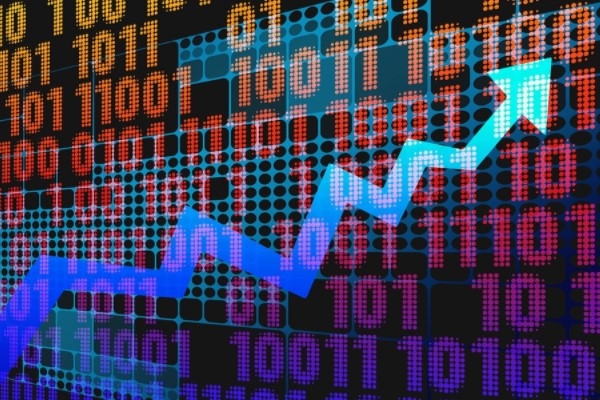9486,56%0,12
39,27% 0,00
44,94% 0,00
4255,72% 0,46
6833,74% 0,00

As expected, the Fed made the fourth consecutive 75 basis point rate hike, signaling that it could enter the final phase of its aggressive campaign to curb inflation. The Fed's unanimous decision raised the benchmark federal funds rate target to the range of 3.75% to 4%, its highest level since 2008. While central bankers say 'continuing increases' will be needed to bring rates to a level that is 'restrictive enough to return inflation to 2% over time', we see new language used in some parts of the policy statement. There are adjustments that need to be followed in terms of curious details such as whether we are approaching the last level in interest rate hikes, determining the ceiling rate, and the pivot sign. As the Fed made its fourth consecutive 75 basis point rate hikes, it signaled that it could approach the final stage of its aggressive campaign to curb inflation.
If we look at the highlights from the Fed statement;
The 'speed of future increases' in borrowing costs will take into account the lagged effects of the cumulative tightening of monetary policy on economic activity and developments in the economy and finance.
The Committee estimates that continued increases in the target range would be appropriate to achieve a sufficiently restrictive monetary policy stance to return inflation to 2 percent over time.

Fed Extends Series of Large Rate Increases… Persistent, hyperinflation announces fourth 75bps move… Source: Federal Reserve, Bureau of Economic Analysis, Bureau of Labor Statistics, Bloomberg
The Fed is in the process of evolving the front-loading approach to a more result-oriented approach, with new terms such as cumulative and lagged impact. Of course, when the areas that are directly affected by the tightening in monetary policy are mentioned, it is necessary to look at the areas that will be directly affected by interest rates and related costs. At the forefront of these is the housing and employment market. As the housing loan interest rates increase, the decrease in the demand for loans and therefore housing will slow down the inflation in this area. As the financing costs of businesses increase, business plans will be reviewed and the labor market will lose momentum. This situation will cause unemployment to rise, increasing unemployment will also reduce the demand of individuals whose permanent income decreases and will slow down inflation. Strong readings for inflation and jobs are still coming, even as sectors like housing and manufacturing have slowed significantly amid the Fed's strongest tightening campaign since the 1980s. The lack of significant progress in inflation also prolongs the period of monetary tightening.
There was no significant easing in the job market either, with unemployment reaching 3.5% in September, its lowest level in half a century. Employers' demand for workers also remained strong, with 1.9 job openings for every unemployed in America, according to JOLTS data released Tuesday. Of course, non-farm payroll data on Friday will be a critical marker in this area. In the November 8 election as well, the erosion of income and purchasing power created by the highest inflation in 40 years could cause Biden's Democrats to lose control of Congress, which is why it is a critical marker.
It is understandable that rate hikes will drop to 50 bps momentum for December. In financial markets, swap traders lowered the pricing for the December meeting and pushed the top rate for the cycle (ceiling or terminal interest rate) from around 5.05% to just under 5% (4.96% for May 2023). The detail of not knowing where the destination will be in Powell's statements shows that it cannot be far from this ratio. As a result, the forecast that the Fed will stop at 4.5% or 5% interest rates actually points to a very wide range. If inflation flares up, is it possible to go over this band? Yes it is.
According to the median estimate, the Fed's September forecasts showed a 50 basis point move in December. These projections set expectations that rates will reach 4.4% this year and 4.6% next year before cuts in 2024. No new forecast was released at this meeting, and until officials meet on December 13-14, they will have two more months of data on employment and consumer inflation.
On the balance sheet issue, the Fed announced, as expected, that it will continue to reduce its holdings in Treasury and mortgage-backed securities as planned - at a rate of about $1.1 trillion per year.
As a result, although a Central bank stance that wants to observe the effects of the actions means that interest rate increases will lose momentum, it is not clear at what level the ceiling rate will be formed due to the validity of sufficiently restrictive rates. The Fed is preparing the market for a 50 bps rate hike in December, but this terminal is not yet at a level to cause a meaningful downward revision in interest rates. We have to monitor the dynamic developments depending on the data and in a sense, the abstaining approach we expect is valid in this regard. An inflation with a high uncertainty band causes the interest rate guidance to not be pulled down much, while the damage effect on economic activity forces it to remain on the path of moderate increase.
Kaynak: Tera Yatırım
Hibya Haber Ajansı

Veri politikasındaki amaçlarla sınırlı ve mevzuata uygun şekilde çerez konumlandırmaktayız. Detaylar için veri politikamızı inceleyebilirsiniz.